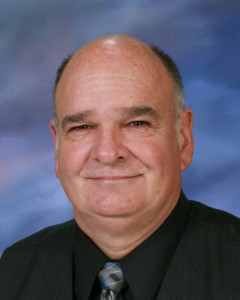Meet James Schneck — Teacher Mentor
Jim Schneck is excited about New Teacher Induction. He has been teaching for 30 years, but he has never seen anything as valuable for new teachers and the schools they serve as this program.
 “The collaboration between mentor and mentee to improve practice results in moving the initial educator forward faster in professionalism and effectiveness in the classroom.” As a principal of a WELS school, Jim knows how important it is for new teachers to be effective. “Parents do talk, and they will see the improvement!” he says. Jim had been involved in the synod’s previous Assisting Beginning Teachers program but says it does not compare to the New Teacher Induction program. “After being involved in the old mentor program, I have seen a vast improvement in the way this program is presented and carried out. The whole philosophy behind the NTI is the improvement of instruction. The purpose of the (classroom) visit is not just a pep rally to boost selfesteem, but it is an organized, and to a degree, scripted, way to move the quality of instruction forward.”
“The collaboration between mentor and mentee to improve practice results in moving the initial educator forward faster in professionalism and effectiveness in the classroom.” As a principal of a WELS school, Jim knows how important it is for new teachers to be effective. “Parents do talk, and they will see the improvement!” he says. Jim had been involved in the synod’s previous Assisting Beginning Teachers program but says it does not compare to the New Teacher Induction program. “After being involved in the old mentor program, I have seen a vast improvement in the way this program is presented and carried out. The whole philosophy behind the NTI is the improvement of instruction. The purpose of the (classroom) visit is not just a pep rally to boost selfesteem, but it is an organized, and to a degree, scripted, way to move the quality of instruction forward.”
Even though Jim has been observing his own teachers for years, he grew in his skills through his mentor training. He explains, “Through the (mentor) training classes you learn different techniques to assist in collaborative conversations with your mentee. The toughest part is the role play/practice. You learn what to say and what not to say, and it is all done in an environment that is safe and encouraging.”
Jim has seen the difference New Teacher Induction mentoring has on new teachers and their schools. “You are taking the mentees where they are in their call and in their practice, and moving them forward to be more effective now, with their current students and local challenges. It has an immediate benefit to the mentee and his or her students as practice improves. There is a ripple effect through the whole school. Collaborations build in your staff as teachers who have been through the program seek to share between classrooms, building the school culture as a whole.”
Principals really benefit from this program, adds Jim. “Especially in our schools, where most of our principals have classroom duties of their own, this program can be very effective. Fewer problems in the classroom means learning is moving forward more rapidly, and the principal has to take less time out of his day to deal with instructional issues.” Strong teachers are important for advancing the mission of the school. “It is easier to promote the school and teacher when it is evident that the teacher and instruction in the room are improving.” Jim reminds principals they “must still be the summative evaluator for the school. This program does, however, assist them in that the teacher has an outside source of help, totally separate from the principal’s summative role, to formatively build the practice in the classroom.” Schools are asked to pay $1,000 for each of the two years of mentoring, and Jim warns his fellow principals not to fall into the trap of thinking they can save a few bucks by getting some other teacher to be the mentor. “If you want to have a retired volunteer show the ‘new guy’ around the building and help them find the toner, that’s fine. But when it comes to developing the talents of a new teacher into a growing professional, I think the investment is a pittance compared to the return of investment that you will see through the new teacher’s growth through observation, collaboration, and training opportunities.”
Jim has found that being a mentor is a privilege that requires commitment and effort. What WELS teachers should become mentors? Jim answers, “If you have the desire to help improve the practice of our newest teachers and a desire for professional growth, by all means. Becoming a mentor takes time to build trust and collaboration. If you aren’t prepared to make that commitment, it is better that you don’t make a half-hearted attempt. A new career and call is depending on you.”



